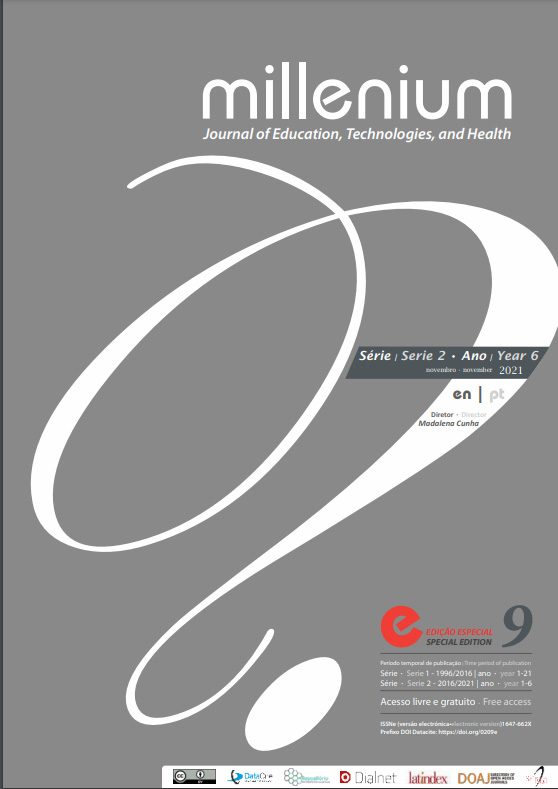Physical exercise influencing factors in health clubs
DOI:
https://doi.org/10.29352/mill029e.24038Keywords:
physical exercise, motivation, body, health clubAbstract
Introduction: The cult of the body and the maintenance of healthy habits have always been a target of social concern, ceasing to be something outside one´s culture to become one of its most striking manifestations. Nowadays it reveals a growing picture of motivation for institutionalized corporal practices.
Objetive: To understand the factors that influence physical exercise practice in Health Clubs of Viseu.
Methods: The study group was composed of 179 clients from seven HC in the municipality of Viseu. The research instrument used was a questionnaire, subject to a previous phase of validation (by peers).
Results: Significant differences between genders are evidenced in the degree of importance attributed to factors such as "increased strength", "muscle gain", "toning", "weight control", "loss of fat mass" and "flexibility gain”, as well as among younger and older, in “muscle gain” and “strength increase” indicators.
Conclusion: Although the appropriate influence factors of each practitioner do not necessarily imply a direct increase in their involvement in physical activity, their knowledge helps learning about practitioners’ sociocultural specificities and, thus, tends to increase the appropriate intervention programs effectiveness elaboration.
Downloads
References
Ascensão. P. (2012). Motivação para a prática de exercício físico em ginásios do distrito de Castelo Branco. (Mestrado). Instituto Politécnico da Guarda. Portugal.
Bento. J. (2009). O Desporto e o Estado – Ideologias e práticas. Edições Afrontamento.
Bento. J. (2006). Corpo e desporto: Reflexões em torno desta relação. In W. Moreira (Ed.). Século XXI: A era do corpo ativo. Papirus, 155-182.
Bento. J. (1995). O outro lado do Desporto. Campo das Letras.
Bouchard. C.; Shephard. R.; & Stephess. T. (1994). Physical Activity. Fitness. and Health: International Proceedings and Consensus Statement. Human Kinects, 6(5), 675-676.
Eurobarómetro - European Comission (2020). Sondagem Eurobarómetro sobre desporto revela elevados níveis de inatividade na UE. http://europa.eu/rapid/press-release_IP-14-300_pt.htm.
Coelho, B.; Souza, L.; Bortoluzzi, R.; Roncada, C.; Tiggemann, C.; & Dias, C. (2014). Comparação da força e capacidade funcional entre idosos praticantes de musculação, hidroginástica e não praticantes de exercícios físicos. Revista Brasileira de Geriatria e Gerontologia, 17(3), 497-504.
Garcia. R. (2007). A evolução do homem e das mentalidades: uma perspectiva através do corpo. Movimento, 4(6), 61-71.
Gervilla. E. (2000). Valores del cuerpo educando. Antropologia del cuerpo y educación. Herder.
Ingi. K.; Airton. J.; Matos. D.; Leitão. J.; Cid. L.; & Moutão, J. (2016). Adesão e desistência de programas de treino personalizado. Revista Iberoamericana de Psicologia del Ejercicio y el Deporte, 11(1), 15-21.
Lipovetsky. G. (1994). O Crepúsculo do Dever: A ética indolor dos novos tempos democráticos. Publicações Dom Quixote.
Liz. C.; Crocetta. T.; Viana. M.; Silveira. M.; Brandt. R.; & Andrade. A. (2010). Aderência à prática de exercícios físicos em academias de ginástica. Motriz, 16(1), 181-188.
Marivoet. S. (2016). Midiendo de la participación deportiva. Un análisis de los hábitos deportivos de la población portuguesa. In R. Goig (Ed.). Participation Deportiva en Europe. UOC, 339-358.
Marôco. J. (2018). Análise Estatística com o SPSS Statistics (7.ª ed.). Almedina.
Morin. E. (1991). Os Problemas do Fim de Século. Editorial Notícias.
Mota, J. & Sallis, J. (2002). Actividade Física e Saúde. Factores de Influência da Actividade Física nas Crianças e Adolescentes. Campo das Letras.
Oliveira. L. (2014). Motivação para a prática de Atividades de Fitness em contexto de ginásio. (Mestrado). Instituto Superior de Economia e Gestão de Lisboa. Portugal.
Padez. C. (2002). Atividade Física. Obesidade e Saúde: uma perspetiva evolutiva. Estilos de vida, 20(1), 11-20.
Pontes, R.; Bento, F.; Azevedo, A. & Eira, P. (2021). Promoção da atividade física em instalações desportivas naturais – estudo realizado na cidade de Viseu. In A. Figueiredo, J. Rodrigues, L. Murta, P. Bezerra, S. Damásio, T. Figueiredo & T. Fonseca (eds.). Desenvolvimento do Desporto e Qualidade de Vida – Ensino, Investigação e Intervenção, pp. 234-242. DOI: https://doi.org/10.34633/978-989-54743-4-9
Popper. K. (1991). Sociedade Aberta Universo Aberto. Publicações Dom Quixote.
Prestes, J. (2016). Prescrição e periodização do treinamento de força em academias. Manole.
Ruivo. R. (2015). Manual de Avaliação e Prescrição de Exercício Físico. Self.
Santos. J. (2011). As Atividades de Motivação. (Mestrado). Faculdade de Letras – Universidade do Porto. Portugal.
Schoenfeld, B.; Peterson, D.; Ogborn, D.; Contreras, B.; & Sonmez, T. (2015) Effects of low-versus high-load resistance training on muscle strength and hypertrophy in well-trained men. Journal of Strength & Conditioning Research, 29(10), 2954-2963.
Silva. P. (1999). O Lugar do Corpo. Elementos para uma cartografia fractal. Instituto Piaget.
Soares. J. (2015). Running. Muito mais do que correr. Porto Editora.
Weinberg. R.; & Gould. D. (2017). Fundamentos da Psicologia do Desporto e do Exercício (6.ª ed.). Artmed.
Downloads
Published
How to Cite
Issue
Section
License

This work is licensed under a Creative Commons Attribution 4.0 International License.
Authors who submit proposals for this journal agree to the following terms:
a) Articles are published under the Licença Creative Commons (CC BY 4.0), in full open-access, without any cost or fees of any kind to the author or the reader;
b) The authors retain copyright and grant the journal right of first publication, allowing the free sharing of work, provided it is correctly attributed the authorship and initial publication in this journal;
c) The authors are permitted to take on additional contracts separately for non-exclusive distribution of the version of the work published in this journal (eg, post it to an institutional repository or as a book), with an acknowledgment of its initial publication in this journal;
d) Authors are permitted and encouraged to publish and distribute their work online (eg, in institutional repositories or on their website) as it can lead to productive exchanges, as well as increase the impact and citation of published work
Documents required for submission
Article template (Editable format)





